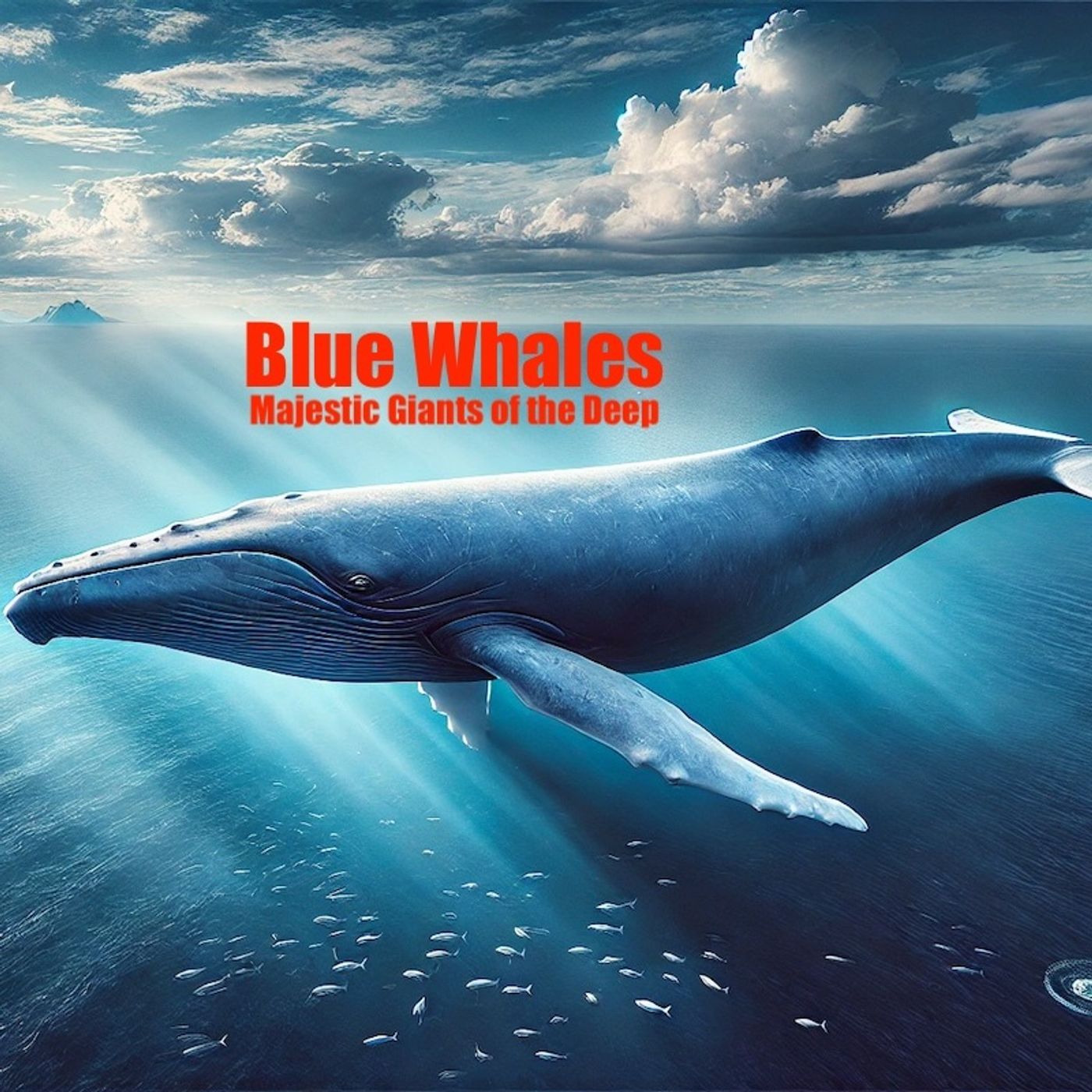Blue Whales- Majestic Giants of The Deep
Description
Imagine the vast, open ocean—a mysterious and boundless expanse that covers over 70% of our planet. In its deepest realms and along its extensive reaches resides one of the most magnificent creatures ever to have graced the Earth: the blue whale (Balaenoptera musculus). To encounter a blue whale is to witness the grandeur of nature itself, an experience that stirs a sense of wonder and reverence for the natural world. These leviathans of the sea, the largest animals ever known to have existed, are a testament to the remarkable diversity and resilience of life on our planet. The Immensity of Blue Whales Blue whales are colossal. An adult blue whale can reach lengths of up to 100 feet (30 meters) and weigh as much as 200 tons. To put this into perspective, their tongues alone can weigh as much as an elephant, and their hearts are comparable in size to a small car. Despite their immense size, blue whales are graceful swimmers, capable of navigating the world's oceans with a majesty that belies their bulk. The sheer size of the blue whale is a marvel of evolution, an adaptation that has enabled them to dominate their marine environment. Their immense body size serves as a defense mechanism against predators, as very few creatures in the ocean can challenge a fully grown blue whale. Additionally, their size allows them to travel great distances and dive to profound depths in search of food. Feeding Habits and Diet Blue whales are filter feeders, relying on a specialized feeding mechanism to consume their primary food source: krill. Krill are tiny, shrimp-like crustaceans that aggregate in dense swarms in the cold, nutrient-rich waters of the world's oceans. During the feeding season, a blue whale can consume up to four tons of krill each day. The feeding process of blue whales is a spectacular sight. They employ a method known as lunge feeding, where they accelerate towards a swarm of krill with their mouths open, engulfing vast amounts of water and prey. Once their mouths are full, they close their jaws and use their baleen plates—composed of keratin, the same material as human hair and nails—to filter out the water, trapping the krill inside. This feeding strategy is highly efficient and allows blue whales to sustain their massive bodies. However, it also means that they must follow the seasonal movements of krill, migrating thousands of miles between their feeding grounds in the polar regions and their breeding grounds in warmer, tropical waters. Migration and Reproduction The migratory patterns of blue whales are among the most extensive of any animal on Earth. These epic journeys, spanning from the nutrient-rich waters of the Arctic and Antarctic to the equatorial breeding grounds, are essential for their survival and reproduction. During the summer months, blue whales feast on the abundant krill in the polar regions, building up fat reserves to sustain them during their long migration and the leaner winter months. Breeding typically occurs in warmer waters, where the calves are born. A blue whale's gestation period is about 10 to 12 months, resulting in the birth of a single calf. At birth, a blue whale calf can measure up to 25 feet (7.5 meters) in length and weigh around 3 tons. These newborns are nurtured with rich, fatty milk from their mothers, enabling them to grow at an astonishing rate of up to 200 pounds (90 kilograms) per day. The bond between a mother and her calf is profound and vital for the young whale's survival. For the first year of its life, the calf relies entirely on its mother's milk and protection. This period of intense care ensures that the calf develops the strength and skills necessary to navigate the vast ocean and eventually undertake the long migratory journeys of its species. The life cycle of a blue whale is a journey marked by incredible growth and adaptation. Once the calf is weaned, it begins to learn how to find and catch krill on its own. Juvenile blue whales face numerous challeng
More Episodes
Published 07/07/24


